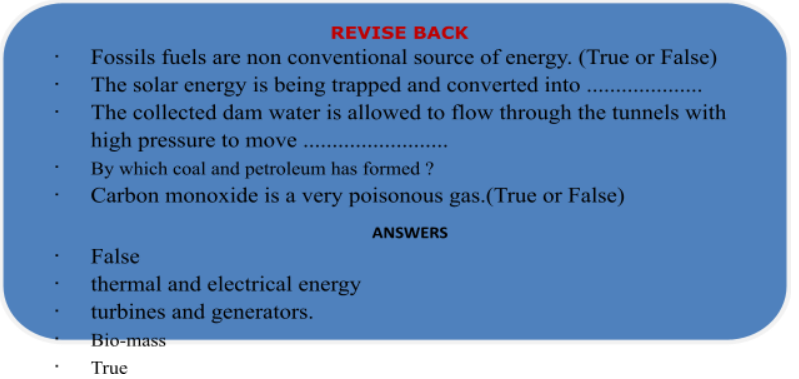Coal And Petroleum
Management And Natural Resource of Class 10
COAL AND PETROLEUM
Coal and petroleum are fossil fuels found in earth’s crust. They are non-renewable and exhaustible resources.
Coal is a combustible fossilized rock derived from a large accumulation of plant remains that is gradually compressed. It occurs in many countries like China, Japan, U.S.A, Iran, Kuwait, India, etc. It is used for cooking, heating in industry and thermal power plants. The coal reserve will last for another two hundred years.
Petroleum is another fossil fuel that occurs in the form of liquid-oil. It has been formed from plant and animal remains. Petroleum is mainly used as fuel for transport, agricultural operations, generators and some industries. The petroleum resource will last for another forty years. Kerosene and LPG (liquified petroleum gas), obtained from petroleum are used as domestic fuels for cooking food, etc.
POLLUTION CAUSED BY BURNING COAL AND PETROLEUM BASED FUELS:
Coal and petroleum have been formed from bio-mass. In addition to carbon, these contain hydrogen, nitrogen and sulphur. When these are burnt, the products are carbon dioxide, water, oxides of nitrogen and sulphur. When combustion takes place in insufficient air (oxygen), then carbon monoxide is formed instead of carbon dioxide. These products are harmful and hence pollute the environment.

Air pollution reducing visibility
e.g.
- Sulphur dioxide causes bronchitis and when it dissolves in rain water, it makes it acidic. The acid rain damages trees, buildings, metals, etc.
- Nitrogen oxides also attack the breathing system and cause acid rain.
- Carbon monoxide is a very poisonous gas. It stops RBC’s from carrying oxygen from lungs and thus causing suffocation.
- Carbon dioxide is not a poisonous gas but it is a greenhouse gas which traps solar energy and leads to global warming.
Thus, we need to use these resources judiciously.
STEPS TO REDUCE THE CONSUMPTION OF COAL AND PETROLEUM:
Some simple choices can make a difference in our energy consumption patterns.
- Switch off the lights, fans, etc when not needed. Also use of energy efficient electrical appliances will save electricity.
- Use of bio gas as domestic fuel should be encouraged.
- Pressure cookers should be used for cooking food.
- Reduce the use of light as much as possible.
- Solar cookers should be used wherever possible.

Related Topics
- Natural Resources
- Solved Question for Coal and Petroleum
- Lakhmir Sing solutions for Coal and Petroleum










